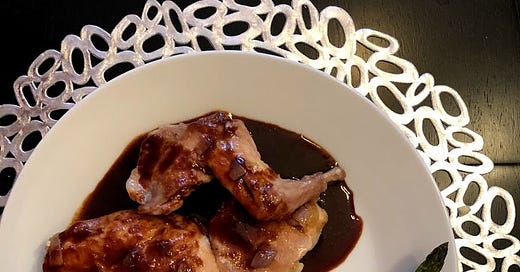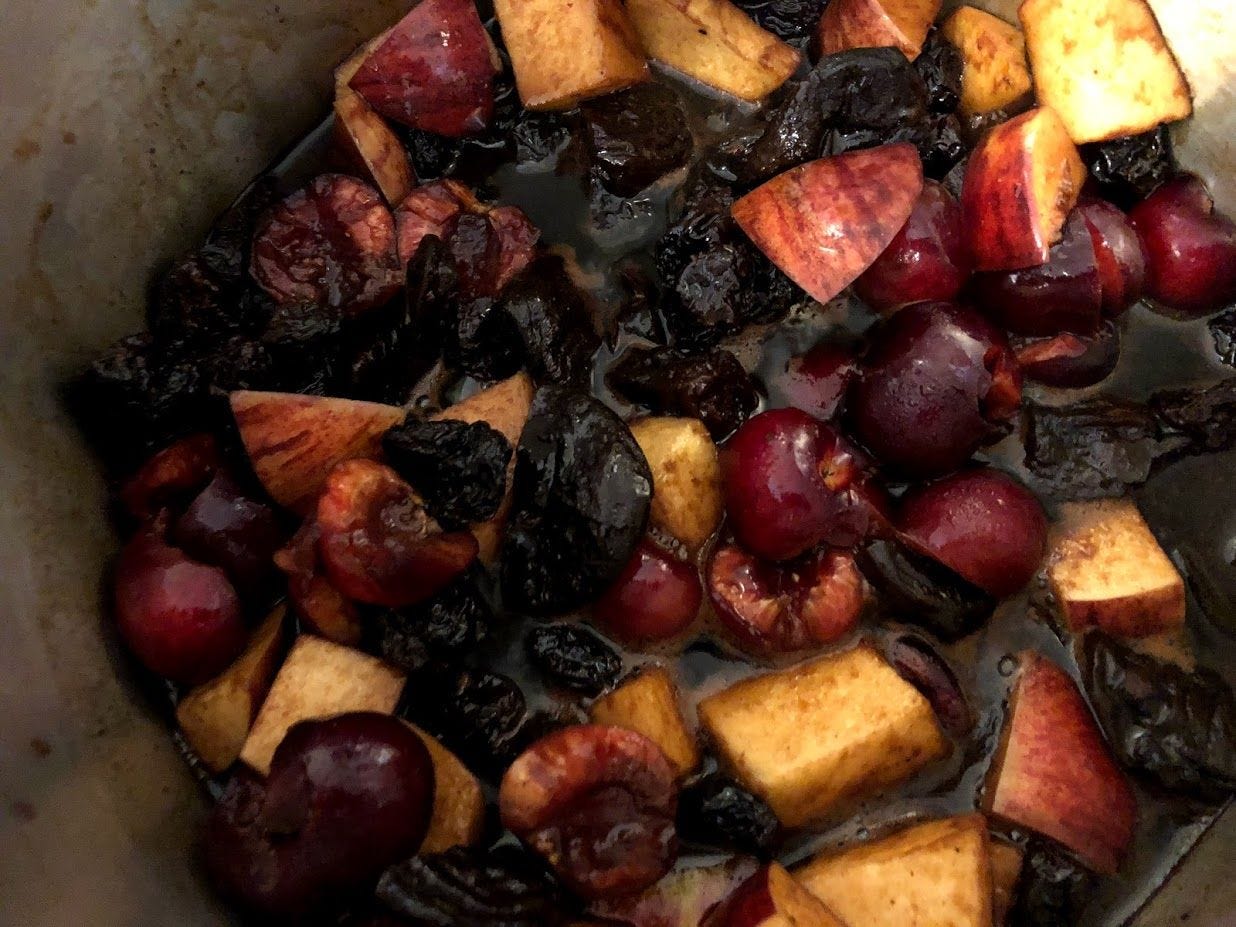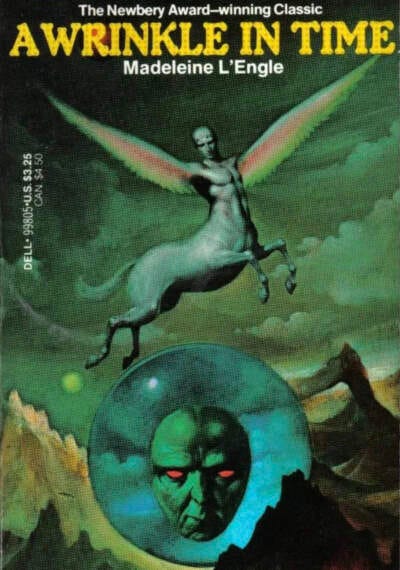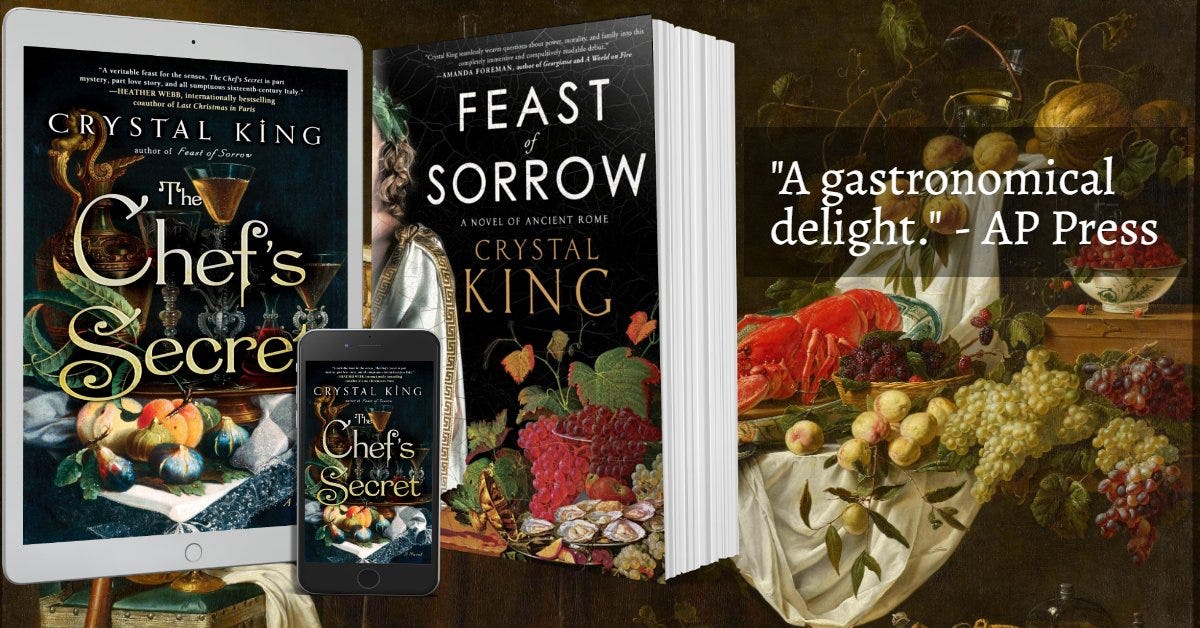Two Renaissance Recipes for the Modern Chef
Also, black broth isn't very black...but it IS delicious!
My first two novels featured Italian culinary figures who left behind cookbooks or manuals of stewardship that gave us the foundation of Italian foods we know and love today. My most recent novel, The Chef’s Secret, is about the man who was probably the first celebrity chef Bartolomeo Scappi. He was known throughout Italy and possibly throughout Europe, for his grand banquets. His cookbook, L’Opera of Bartolomeo Scappi, has over 1,000 recipes with some of the first pasta dishes, hundreds of meat and fish recipes, and dozens upon dozens of delicious recipes for pies and pastries. It was published in 1577 and was a bestseller for nearly two centuries.
Diving deep into the cookbooks and trying to recreate the meals of the past is one of my favorite parts about writing the stories I write. Recreating a 500-year-old recipe isn’t as easy as you might think. For example, I transformed a recipe for braised beef, which calls for a beef tenderloin. Scappi suggests that the tenderloin should be boiled, which is something that would make most chefs of today shudder at ruining such a choice cut of meat. But Scappi wasn’t going to the supermarket and picking up a pound of carefully butchered beef. Instead, he was dealing with an entire tenderloin, which would be 7-8 lbs., a cut that could cost you anywhere from $75-300 at a butcher, depending on the quality. They also didn’t have the same sanitary conditions, so they would wash the meat in wine and then boil it before roasting it as a precaution to ensure that people wouldn’t get sick. This is just an example of how a direct translation of a recipe might not make for the easiest recreation or the best-tasting representation. In those cases, I try to stay as true to the flavors as possible. Usually, I make the recipe several times, tweaking it a little bit each time to get it right.
Here, I give you two recipes that can go together or stand alone. If you make them, I’d love to know what you think!
Fricassee of Rabbit by Crystal King
This recipe, from Book II.94 of L’Opera di Bartolomeo Scappi, is a simple one for cooking rabbit. Scappi called for boiling the rabbit in salted water, as did many meat recipes of that time. Today, we know that boiling meat can render out a lot of the flavor, so I recommend brining instead. He also called for spring onions, which, if you can get them in season, you should definitely try! Scappi suggested dressing the rabbit with a mustard sauce of your choosing or a sauce called “black broth.” I have included a recipe for black broth following this one.
2 cups salt
Whole rabbit, approximately 2.5 lbs
Pork fat (you could use bacon or prosciutto fat) or lard for cooking
1 onion, chopped
Brine rabbit in 2 gallons of water, mixed with 2 cups of salt, for at least 6-8 hours. Overnight is fine.
Cut the rabbit into pieces, cut the meat off the carcass, and leave the bones in the legs.
Render down the fat in a skillet, then cook pieces with bones first and fry up the rest of the meat until brown, adding onions during the last minute or two of cooking.
Serve with a mustard sauce of your choice or with black broth (see following recipe).
Black Broth by Crystal King
Scappi recommends this sauce, found in Book II.252 of L’Opera di Bartolomeo Scappi, for use with fowl and various quadrupeds. I pair this with his recipe for Fricassee of Hare (though I use rabbit), but it would also be delicious with duck, chicken, or pork.
Scappi suggested adding some sugar if you don’t find the mixture sweet enough, but I have found that it is plenty sweet from the fruit. He also suggests sprinkling cinnamon and sugar on top, but the recipe is plenty sweet without this. Scappi put sugar on nearly everything (even fried eggs!), but we now know that using sugar so liberally isn’t very healthy.
The recipe calls for grape must, but you could use sapa, vincotto, mosto cotto (all available on Amazon or at a grocer that carries Italian products), or balsamic vinegar as a substitute.
1 quince (you can substitute a very crisp apple), chopped
1 cup raisins
1 cup prunes, chopped
1 cup dried or fresh (pitted) cherries
3 1/2 tbsp grape must
1/2 cup red wine
2 tbsp sweet white wine or white grape juice
1/2 tsp pepper
1/2 tsp cinnamon
1/4 tsp ground cloves
1/2 tsp nutmeg
1 tbsp flour
1 tbsp fresh squeezed orange juice
Put all ingredients except the orange juice into a saucepan. Cook this mixture down on medium heat, stirring frequently, until the fruit is soft, the mixture is slightly thick, and the juices are bubbling. Strain and add the orange juice to the mixture. Pour over meat.
If you like, you can keep the fruit in the mixture and serve as a compote, or reserve the fruit for use in a pastry dish or as a topping for ice cream.
Note: These recipes first appeared in Jungle Red Writers.
WHAT’S BRINGING ME JOY THIS WEEK
The 80’s were a weird time, really. And no, I myself never owned a pair of leg warmers.
This totally tubular Spotify playlist of new Italian New Wave songs.
This wild podcast (transcript included) story of trying to figure out who the artist of Madeleine L’Engel’s Wrinkle in Time book cover was.
If you love food and love Italy, and haven’t read THE CHEF’S SECRET or FEAST OF SORROW, click the links to learn where to buy your copy! 🍒🍗🍷
You can also follow me in these places too: Website | Instagram | Facebook | Threads








Love the idea of the Black Broth! Can't wait to try it!
That black broth reminds me a little of a fruit soup that my grandmother used to make at the holidays!